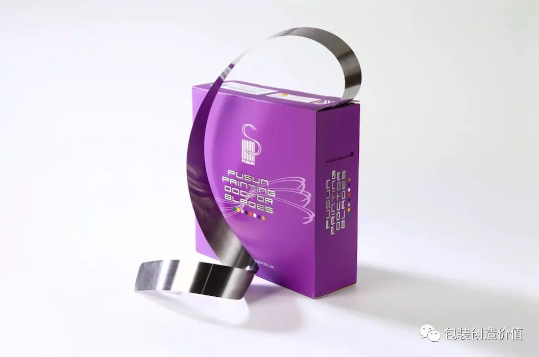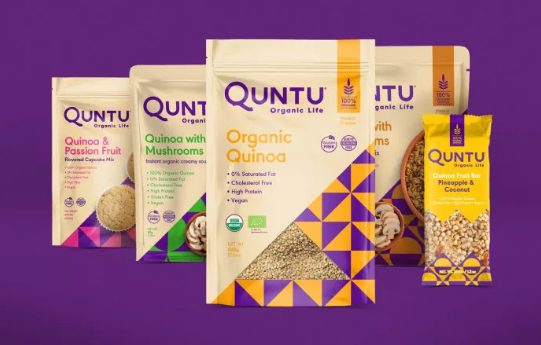
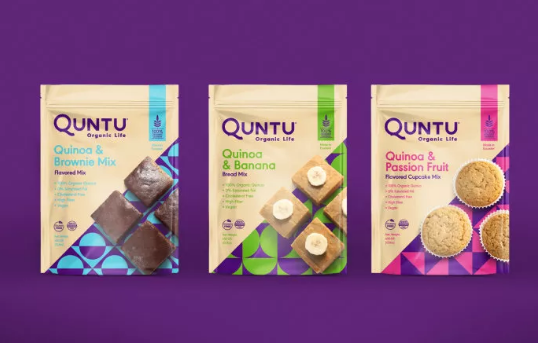
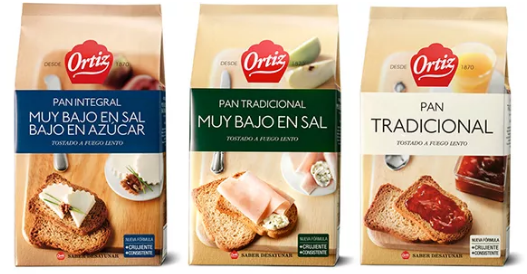
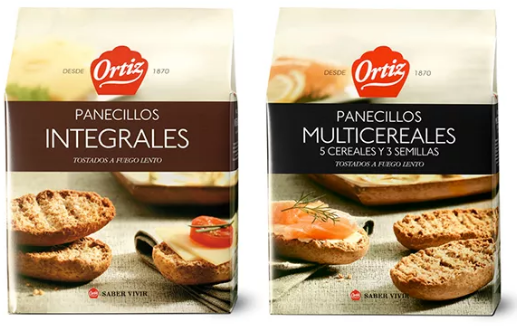

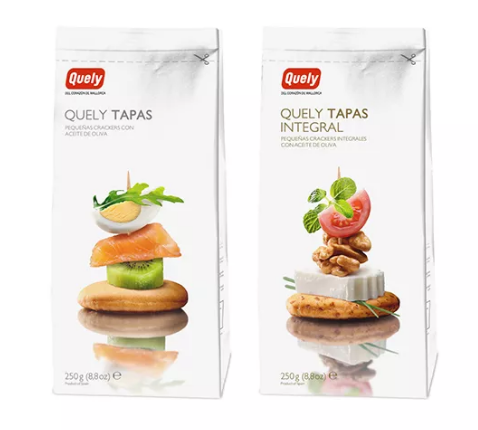
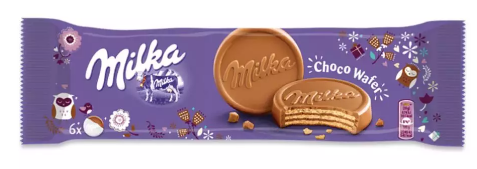
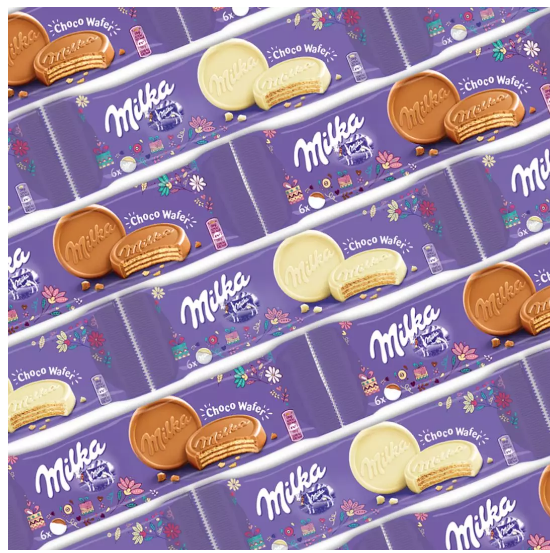
Electronic shaft printing technology started late in China. At present, most electronic shaft printing machines adopt the control system of foreign brands, such as Fuji, WH, bost, b&c, etc. The electronic shaft sleeve printing system of foreign brands is expensive, with high after-sales service cost and long service cycle. This paper introduces the application of electronic shaft control system in high-speed gravure printing machine.
I. current situation analysis
At present, most gravure printing machines in China adopt traditional mechanical transmission structure, which is easy to wear, short life, complex structure, poor overprint accuracy, high scrap rate, long pre-registration adjustment time, unable to meet the digital management and monitoring and other defects, has gradually failed to meet the market demand.
Electronic shaft drive technology came into being, which can make up for these defects.
Electronic shaft technology is to replace mechanical gear with electronic gear, replace mechanical CAM with electronic CAM, replace mechanical shaft drive with phase synchronization, replace belt drive with speed synchronization. Compared with the traditional mechanical total shaft drive printing machine, the electronic shaft drive printing machine eliminates the gear, shaft, belt and other links in the movement chain, avoids the influence of mechanical error, simplifies the mechanical structure, reduces the machining cost, improves the printing accuracy and guarantees the printing quality. The increase in power capacity also increases the maximum printing speed of the press.
With the improvement of industrial automation, electronic shaft drive technology has been widely used in gravure printing. As a substitute of traditional mechanical shaft printing machine, it has many advantages such as simplified structure, flexible configuration, high synchronization accuracy, easy maintenance and network integration.
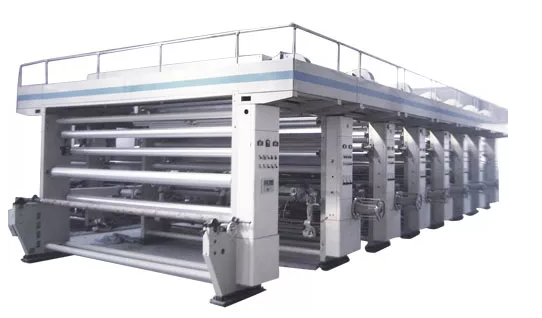
Gravure printing has the advantages of good printing quality, high resistance to printing, suitable for long plate printing. In recent decades, the application of packaging printing production in China has been expanding, has become the plastic soft packaging industry the most important printing way. However, due to the gravure printing materials and production process is very complex, in the printing process often appear quality problems. There are four main quality problems: scraper line mark, overprint accuracy, dot loss and residual solvent. This paper discusses the causes and treatment of scraper line marks with readers.
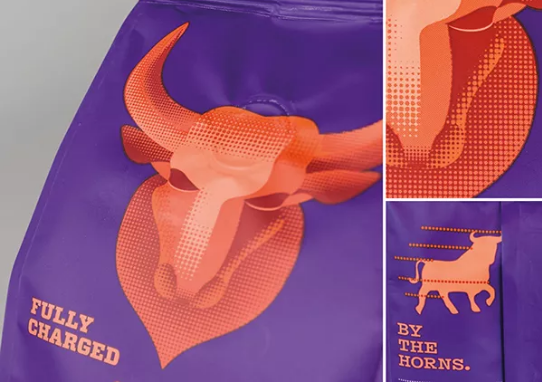
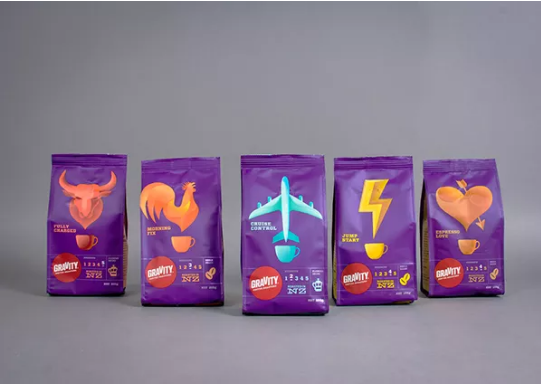
Scraper line mark (knife wire, knife line)
Scraper line mark, etc., also called knife, knife line refers to the version of the rollers on the printing ink after scraping knife scraping appear linear blank or dirty version, graphic is transferred to the substrate, in vertical print extra lines, line forms, some of the lines are no ink, some are printing ink is continuous, some are intermittent, some mobile, some coarser, some subtle.
The cause of blade line mark
(1) no ink line mark. Ink is mainly mixed with hard inorganic impurities, such as sand, these hard particles embedded in the blade of the scraper and create line marks. Sometimes this kind of scraper line marks are also dotted, the appearance of this scraper line marks is easy to damage the printing and scraper.
(2) thick ink continuous scraper line mark. This is mainly due to some coarse soft particles or impurities jack up the scraping knife, or blade damage and produced. This is the simplest and most common scratch mark.
(3) "meteor" shape scraper line mark. This kind of scraper line mark is generally in the printing roller dot is very shallow or not carved dot part, sometimes hidden, great harm to product quality. The cause of this kind of scraper line mark is more complex, over the years, someone has been from ink, plate making, printing environment and other aspects of the explanation, but so far, there is no one is more perfect. A good one is the "active particle hypothesis".
Active material hypothesis refers to the processing and manufacturing in the printing ink and printing, in use process links ink resin, pigments will suffer a severe blow, mixing and grinding, a collision, the role of these forces can create link material and pigment molecule chain rupture, some with polarity or group of ions, namely "active" particles, and the printing scraper and print roller friction, also make the chrome plated version of the roll surface more chromium ion. These polar particles in the printing process will continue to produce, continue to combine, and more adhesion to the plate roller, under the pressure of the scraper, a circular strip distribution. In small quantities it will not be printed on the substrate. However, these polar particles combine to produce a strong cohesion, the resulting material is constantly gathered together, when the accumulation of a certain degree, will be printed on the printing film. Of course, this transfers only about two-thirds of it. The rest continues to react, coalesced, aggregate, accumulate to a certain extent and then print on the printing film, which is why it appears like a meteor and often appears in a fixed position. In addition, as these particles gather and adhere, if in the deeper part of the dot, it will normally transfer to the printing film, become part of the pattern ink layer; Only in the dot is very shallow or not at all carved place, it will become redundant, become scraper line mark. To be exact, the popular scraper line marks are not produced by the scraper, but by an internal chemical reaction in the printing process. In addition, in the process of reactive particle reaction, if there are foreign particles as its adsorbent or nucleating agent, the reaction will be greatly accelerated, resulting in more dense lines.
Especially black ink and blue ink easy to appear this phenomenon, because the two kinds of ink resin content is more. Although the white ink halo phenomenon, but not eye-catching, in the ink mixed with impurities or the environment is not suitable, ink additives, such as wax precipitation, pigment agglutination, also easy to produce.
(4) thin filamentous continuous scraper line mark. This kind of scraper line trace is small, like hair, often appear in the printing process, and it is difficult to observe on the printing press, until found that a large number of products have been printed, so it is extremely harmful to the quality. This kind of scraper line mark can be divided into two types, one is soft can be gently wiped off with a bamboo knife, mainly caused by impurities; And another kind is to appear hair filamentous at the beginning, show ribbon to distribute slowly later, cannot be wiped with bamboo knife, the reason that its generation is very complex, involve inks, platemaking, environmental temperature, humidity, scraper soft and hard degree to wait for a respect, need specific problem specific analysis processing. Generally speaking, there are several aspects.
A. Version roller aspect. Roller surface smoothness is not good, roller surface chrome-plated layer hardness is not enough, version roller graphic design when the black version has some very deep, very thick text, the edge of the text transition is not smooth enough, the layout depth change position processing is not good enough, version roller too smooth, no lubrication is easy to produce.
B. Ink. Ink fineness is not enough, pigment particles are too large, ink use process mixed with granular impurities; Ink dilution is not standard, resulting in a solvent impact phenomenon, resulting in the pigment particles on the surface of the resin coating layer decreased, particles between the aggregation combined into large molecular particles; Ink occurred larger flocculation phenomenon; Ink antistatic poor performance, ink lubrication poor performance. The use of hard pigments produces lines.
C. environmental aspects. The temperature, humidity and cleanliness of the air in the printing room can also be affected, especially when the temperature changes suddenly and humidity decreases. Dust can produce thin knife wire, plastic film produced electrostatic adsorption when printed and a large number of adsorption dust, once the dust from the air in microns diameter transferred to the film, and in the process of printing from film to the version of the roller, can stay in the ink, will stick on the scraper, thin knife silk slight headache again.
D. static electricity. Static electricity is a great cause of this line mark, plastic film produced by the high static electricity, ink transmission machine operation, scraper and version of the roller produced by static electricity, if the elimination is not good, will produce a lot of this line mark.
E. scraper aspect. A hard scraper creates more lines than a soft one. In addition, if a scratch line mark cannot be processed in time, a large bunch of scratch line marks will be generated around the line mark along with the back and forth swing of the scraper.
Treatment countermeasures
(1) the installation of the knife must be smooth and careful, before the installation of the knife to check whether there is a gap in the blade, after the installation of the knife must be carefully grinding, in the printing process, if there is a knife wire, must stop the machine and then carefully grinding. Special attention should be paid to, after grinding the knife, first use a dry cloth to wipe the oil dry, including the paper and the root of the knife, and then use a soft cloth with solvent wipe dry, do not mix knife oil ink.
(2) must control the environment, reduce dust, in order to troubleshoot. Should be as close as possible to the color printing environment, can be installed air filter and dust content verification, otherwise, it is difficult to produce high-quality products.
(3) caused by the plate roller knife wire generally appear in the shallow part of the net, such as, version rough, gradient excessive uneven, mesh depth is not suitable. Generally should be through the use of metallographic sandpaper grinding plate processing, pay attention to grinding plate force to be even, especially serious to return to the plate factory for processing.
(4) reduce the ink viscosity, such as the viscosity is too large, printing ink drying too fast, relatively increased the friction between the version of roller and scraper, scraper is difficult to scrape off the printing ink form knife wire.
(5) if the knife wire is caused by ink, generally due to the ink is garbage or ink dissolution caused by uneven, should be taken to filter ink, re-select the solvent with strong solubility or change ink. In addition, water into the ink will seriously damage the stability of the system, also easy to produce knife wire. Therefore, in the version of the roller contact with ink must be used with a solvent soft cloth to wipe the version of the roller, and then immediately immersed in the ink, do not take the water version of the roller direct contact with ink. Again, different models of ink barrels must be wiped dry after filling ink.
When the scraper line mark is found in the printing process, we should pay attention to distinguish its type, different types of scraper line mark, its treatment method is different.
The first kind of ink-free scraper line mark, the treatment needs to loosen the scraper slightly, with the bamboo knife lightly press the blade or wipe, if still can't eliminate, the need to lift the high pressure roller, the scraper completely loosen, let the ink will be hard particles away. Special attention should be paid to the treatment of this kind of scratch mark not too hard, in order to prevent damage to the version of the roller or scraper.
The second kind of scraper line mark is the most simple, as long as the bamboo knife gently wipe off, if the blade is damaged, then to stop sharpening or change the knife.
A third type of blade line mark (meteor or circular blade mark). This kind of scraper line mark is difficult to deal with, need to be carried out comprehensively. Specific methods are as follows:
(1) ink filtration. Before production and production must be the ink circulation filtration, filter mesh can choose 100 mesh ~120 mesh stainless steel mesh.
(2) the addition of active moderators to eliminate the printing process produced by the active group. 5089AL is a good activity moderator.
Sweep the grinding plate. Use 50 mesh metallographic sandpaper to clean the printing roller, which is a process without stopping the machine. The basic operation is to select a palm on a small 50-gauge metallographic sandpaper (be careful to check that it is not too easy to powder and does not have oil stains on it) and to quickly sweep it back and forth on the rotating plate roller. The key to the operation is the speed of the sand paper back and forth and the position of the sand paper on the page.
(4) after cleaning the version in high speed rotation, with 1# metallographic sandpaper or 50 mesh metallographic sandpaper evenly coated with oil after grinding version. After grinding the plate must be cleaned.
The scraper should also be appropriate for grinding and adjustment.
Fourth class scraper line mark (fine wire scraper line mark). The treatment of this kind of line mark is the most complicated, and the cause must be analyzed carefully. The basic treatment method is as follows:
(1) with 50 mesh metallographic sandpaper gently stick line mark grinding plate. Note that when grinding sandpaper can not be forced on the plate, only gently adhere to. In addition, the printing speed is too slow to use this method.
(2) in serious cases must stop grinding version, grinding scraper.
Filter ink or with another bucket of ink, or even for another type of ink.
(4) the use of 5089AL type printing auxiliary agent also has a certain role, but to join the auxiliary agent must ensure that the ink is completely circulating filtration. After grinding the first version of the wash with additives, and then added to the ink effect is better.
(5) improve the environment of the printing press, appropriately increase the air humidity, try to maintain a constant temperature, and reduce dust.
6 improve the printing press to eliminate static electricity and add a certain anti - static agent and lubricant in the ink.
If version roll design and manufacturing problems should be returned to plate factory to deal with.
8 mild knife line use fast dry solvent.
9 to increase the proportion of new ink.
When the scraper line mark is found in the printing process, we should pay attention to distinguish its type, different types of scraper line mark, its treatment method is different.
The first kind of ink-free scraper line mark, the treatment needs to loosen the scraper slightly, with the bamboo knife lightly press the blade or wipe, if still can't eliminate, the need to lift the high pressure roller, the scraper completely loosen, let the ink will be hard particles away. Special attention should be paid to the treatment of this kind of scratch mark not too hard, in order to prevent damage to the version of the roller or scraper.
The second kind of scraper line mark is the most simple, as long as the bamboo knife gently wipe off, if the blade is damaged, then to stop sharpening or change the knife.
The third kind of scraper line mark (meteor type or circular scraper mark) : this kind of scraper line mark is difficult to deal with, need to be carried out comprehensively. The specific method is:
(1) ink filtration: before production and production must be the ink circulation filtration, filter mesh can choose 100-120 mesh stainless steel.
(2) add an active moderator to eliminate the printing process produced by the active gene. At present, "chy-1 printing assistant" is a good activity slowing agent used by many manufacturers. However, it is necessary to pay attention to the ink filter when using it, and filter out the product after the active reaction, and the effect is more significant.
(3) sweeping grinding plate: with 50 purpose of metallographic sandpaper on the printing roller sweeping grinding plate, this is a we do not need to stop the processing method. The basic operation is to select a palm-sized piece of 50-gauge metallographic sandpaper (be careful not to powder it too easily and not to stain it with oil) and sweep it quickly back and forth across the rotating plate roller. The key to the operation is the speed of sand paper sweep and sweep on the layout of the position.
(4) after cleaning the version in high speed rotation, with 1# metallographic sandpaper or 50 mesh metallographic sandpaper evenly coated with oil after grinding plate, grinding plate must be cleaned, had better use chy-1 printing auxiliary agent wash a plate after the ink. The scraper should also be appropriate for grinding and adjustment.
If the meteor type scraper line trace is relatively small, can only be used to clean the plate, but it is only a palliative - will adhere to the plate of active substances sweep away, but not the root - failed to cut off or reduce the formation of active substances, after a period of time, scraper line trace will appear again. Therefore, this kind of scraper line mark is usually treated by adding active moderators and the above comprehensive treatment.
The fourth kind of scraper line mark (particle type scraper line mark) : this kind of line mark processing is the most complex, must carefully analyze the cause. The basic treatment method is:
(1) with 50 mesh metallographic sandpaper gently stick online mark grinding plate. Note that when grinding sandpaper can not be forced on the plate, only gently adhere to. In addition, the printing speed is too slow to use this method.
(2) in serious cases must stop grinding version grinding scraper. Filter ink or with another bucket of ink, or even for another type of ink.
(4) the use of chy-1 type printing auxiliaries also have a certain role, but after the addition of auxiliaries must ensure the complete circulation of ink filtration. After grinding the first version of the wash with additives, and then added to the ink effect is better.
(5) improve the environment of the printing press, appropriately increase the air humidity, try to maintain a constant temperature, and reduce dust. 6 improve the printing press to eliminate electrical functions and add a certain anti - static agent and lubricant in the ink. If version roll design and manufacturing problems should be returned to plate factory to deal with.
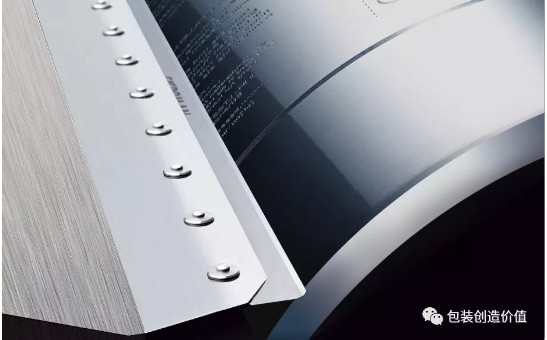
In gravure printing, the scraper plays a very important role in printing quality. The quality of printing depends largely on the scraper. The role of the scraper: to scrape all the excess ink in the non-printing area, the printing area ink is transferred to the film through the scraper, the printing process must master the use of the scraper.
Scraper by the knife, knife back, blade three parts, the blade is generally made of stainless steel thickness 0.1mm, 0.15mm, 0.20mm, 0.25mm, etc. Several kinds, now our factory use thickness 0.15mm, soft (thin) scraper easy to produce fog, hard (thick) scraper easy to wear gravure. I plant knife back about 0.30mm steel sheet (with the role of enhancing the flexibility of the scraper).
The hardness of the scraper is usually less than the gravure plate for vickers 500-700, gravure coating for vickers 900-1100. The length of the scraper is generally 30-40mm longer than that of the gravure. Clean up the knife rest, put the blade under the back of the knife, pull them flat and clamp them with the screw. After installation, there must be no curve, but straight. The distance between the knife rest and the knife back is about 20-25mm, and the length of the scraper blade is about 3-5mm, which should be adjusted according to the printing situation.
After installing the blade, polish the blade (both old and new blades should be polished), put on gloves to prevent scratching fingers, and polish the blade back and forth with 1000# sandpaper dipped in oil.
Adjust the knife rest so that the knife is tangent to the printing gravure at an Angle of 60-70 °, and the distance between the blade and the embossing point is 25 -- 35mm.
Adjust the scraper pressure to scrape the gravure, and scrape the gravure non - printing area of the ink is the minimum pressure.
The characteristics of
1. The thickness of the blade is uniform. If the blade is changed in the production process, only the blade needs to be changed.
2, the use of special knife clip, blade replacement quickly, saving time, but also reduce the intensity of work.
3. Uniform blade thickness ensures uniform and stable scraping effect and consistent printing quality.
4, for the hierarchical graphic products, the printing effect is better.
5, good wear resistance, long service life, heat suitable for long plate printing.
Installation method
1. Thoroughly clean the scraper rack on the printing machine, confirm that there is no ink or impurities remaining, and polish the areas with burrs.
2. Install the tool holder in the scraper holder and adjust the overhang length of the tool holder. Generally, the overhang length of the tool holder should be 16~25mm.
3. Rotate the clamp screw to fix the clamp, and rotate it exactly the same as when installing the traditional blade.
4, prepare the back knife, back knife length is generally 20mm shorter than the length of the plate cylinder, both ends of a bevel cut, and with a file grinding both ends of the burr.
5. Insert the back knife into the knife holder and make sure that the back knife is in the center of the knife holder.
6. Install the blade, cut a blade with the same length as the knife clip, also cut an inclined mouth at both ends of the blade, and then polish the burr with a file.
7. Insert one section of the blade into the tool holder to align the blade with one end of the tool holder, then press the blade into the tool holder with a tight soft cloth.
8. Gently slide the whole blade with your finger to confirm whether the blade is smooth, the installation is smooth and the installation is stable, and check whether the blade has wavy edge and the blade has collision, etc.
